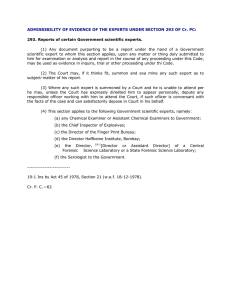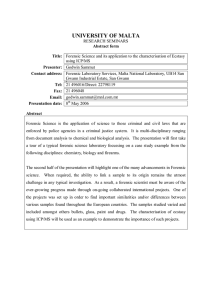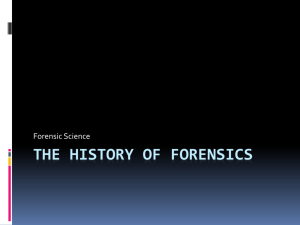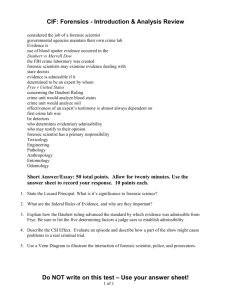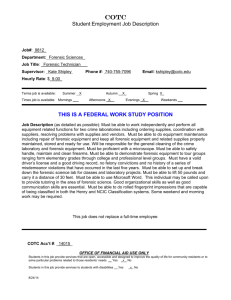Forensic Science
advertisement
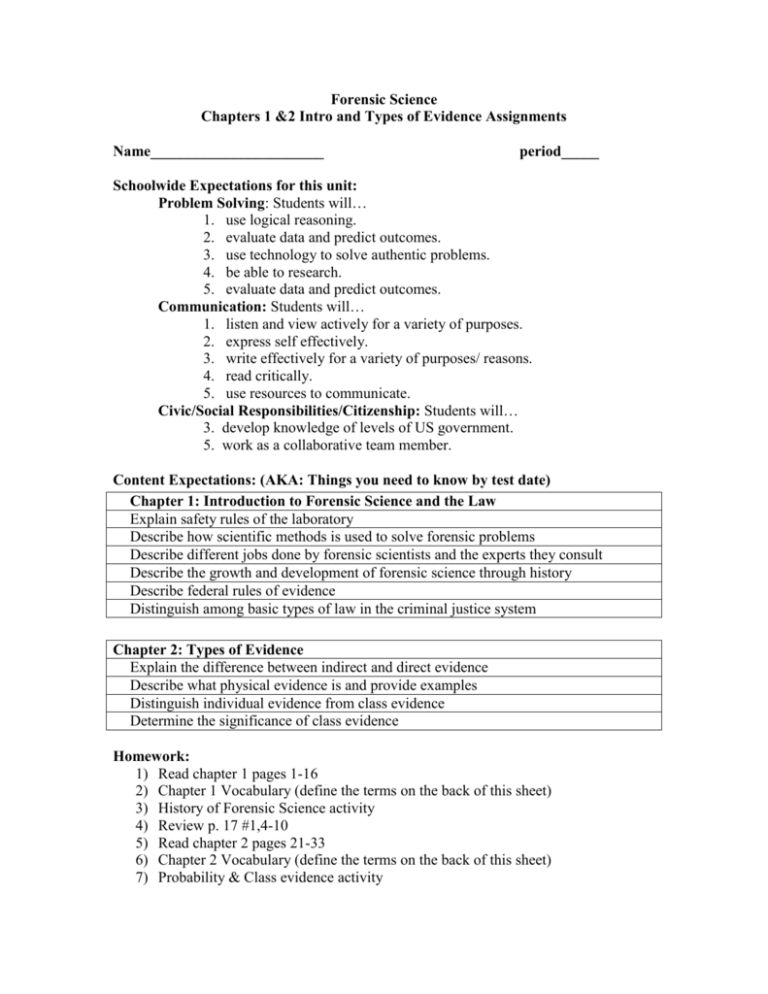
Forensic Science Chapters 1 &2 Intro and Types of Evidence Assignments Name_______________________ period_____ Schoolwide Expectations for this unit: Problem Solving: Students will… 1. use logical reasoning. 2. evaluate data and predict outcomes. 3. use technology to solve authentic problems. 4. be able to research. 5. evaluate data and predict outcomes. Communication: Students will… 1. listen and view actively for a variety of purposes. 2. express self effectively. 3. write effectively for a variety of purposes/ reasons. 4. read critically. 5. use resources to communicate. Civic/Social Responsibilities/Citizenship: Students will… 3. develop knowledge of levels of US government. 5. work as a collaborative team member. Content Expectations: (AKA: Things you need to know by test date) Chapter 1: Introduction to Forensic Science and the Law Explain safety rules of the laboratory Describe how scientific methods is used to solve forensic problems Describe different jobs done by forensic scientists and the experts they consult Describe the growth and development of forensic science through history Describe federal rules of evidence Distinguish among basic types of law in the criminal justice system Chapter 2: Types of Evidence Explain the difference between indirect and direct evidence Describe what physical evidence is and provide examples Distinguish individual evidence from class evidence Determine the significance of class evidence Homework: 1) Read chapter 1 pages 1-16 2) Chapter 1 Vocabulary (define the terms on the back of this sheet) 3) History of Forensic Science activity 4) Review p. 17 #1,4-10 5) Read chapter 2 pages 21-33 6) Chapter 2 Vocabulary (define the terms on the back of this sheet) 7) Probability & Class evidence activity 8) Can this evidence be individualized? Activity 9) Case Studies: Coral Eugene Watts, Ronald Cotton, Fracture Match, Richard Crafts 10) Review p. 35 #1-15 11) Assessment 12) PROJECT: Both Sides of the Issue- Public information on Registered Sex Offenders Chapter 1 Vocabulary 1. forensic science/ criminalistic 2. evidence 3. Lockard principle 4. statutory law 5. case law 6. civil law 7. criminal law 8. misdemeanor 9. felony 10. probable cause 11. Miranda rights 12. booking 13. arraignment Chapter 2 Vocabulary 1. testimonial evidence/ direct evidence 2. physical evidence 3. indirect evidence 4. circumstantial evidence 5. individual evidence 6. class evidence 7. probative value 14. 15. 16. 17. 18. 19. 20. 21. 22. 23. 24. 25. 26. evidentiary hearing bail grand jury indict plea bargain violation infraction probative material witness hearsay expert witness Frye standard Daubert ruling



